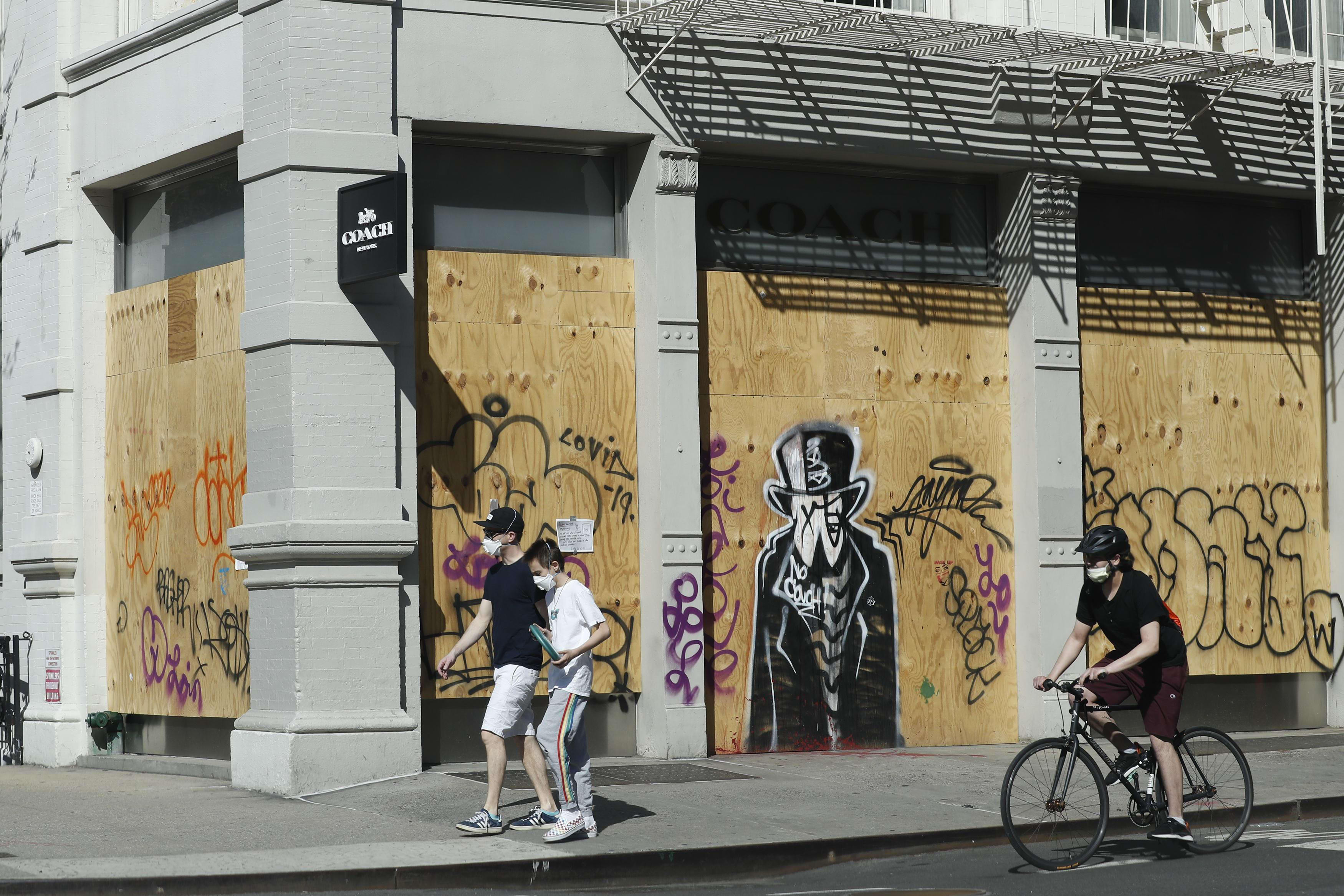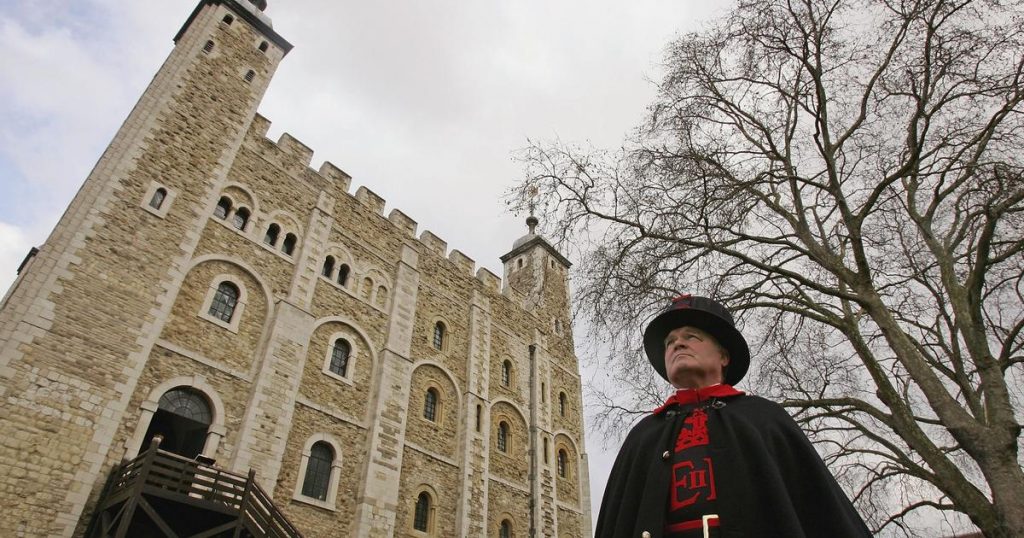
Pedestrians wearing face masks walk past a boarded up Coach store in SoHo amid the coronavirus outbreak on May 3, 2020 in New York City.
Liao Pan | China News Service | Getty Images
April’s jobs report will be horrific, and with the worst job losses ever, it should provide a critical look into the depths of the crater the economy has fallen into.
Economists expect a record 21.5 million jobs were lost last month, sending the unemployment rate sharply higher to 16% from just 4.4%, according to Dow Jones. But economists concede that unemployment rate could be as low as 11% or higher than 20%, because of the way the government collects the data in its survey.
At 16%, it would be the highest rate of unemployment since 1939, the tail end of the Great Depression and just before World War II. The April employment report will be released at 8:30 a.m. ET Friday.
“This is the biggest and most acute shock that we’ve seen in post-war history. It’s a dramatic loss of output in a very short period of time,” said Michelle Meyer, head of U.S. economics at Bank of America. When states began to shut down in March, among the first casualties were jobs in the restaurant and leisure industries, retailers, and at airlines.
Economists say the job losses in Friday’s report could mirror what was in ADP’s April payroll report, released Wednesday. Of the 20.2 million private-sector jobs that were lost, ADP said 8.6 million were in leisure and hospitality, more than double the losses in the next biggest category. The next largest decline was the loss of 3.4 million jobs from trade, transportation and utilities, which would include airline workers.
The government data should reveal the breadth of the job losses and detail the demographics of those who are now out of work, even if it is just temporarily.
“It’s understood leisure and hospitality and retail have seen a large displacement of workers, and that’s apparent in the claims numbers. The extent that has spread across the economy will tell us a lot, and the more it has spread, the more challenging it will be to return to normal,” said Meyer.
“I think it will be concentrated in those industries, but I think it will be fairly broad-based. It’s hard to escape this recession,” she said.
Meyer expects a decline of 22 million nonfarm payrolls and an unemployment rate of 15%.
Economists are watching wage data, and Morgan Stanley economists predict average hourly earnings will rise 0.75% in the largest monthly increase ever, simply because many of the layoffs are among lower-paid workers and overall wages will average higher. Leisure and hospitality industry workers average the lowest hourly earnings of any industry, followed by retail employees.
But Mark Zandi, chief economist at Moody’s Analytics, said it may turn out that wages are falling for those who are working because many companies are seeking pay cuts to avoid layoffs. He said there’s a chance average hourly earnings could decline, and job losses have still not peaked.
“Even in the financial crisis, businesses held wages steady. Now it appears they’re cutting. People are willing to take a wage cut to hold onto their jobs,” he said. “So far, most of the damage to the economy has been the business shut down, the supply side … As business reopens it’s going to be a demand side story. The lost jobs, the lost wages, the lost wealth that will cut into spending, consumer spending.”
Zandi expects that the job losses will peak in the next couple of weeks, and the unemployment rate could climb to about 20% in May, when he expects to see another 5 million or so jobs lost.
“Then we’ll get a bounce if we don’t get a second wave [of infections] in the summer months,” he said, adding unemployment could drop to about 10% by fall. “The unemployment rate will be cut in half by Election Day. Then we go nowhere fast until there’s a therapy we all feel good about — not only a vaccine but one that’s widely distributed.”
Meyer also expects a bumpy recovery. She expects sharp job losses and a steep 30% contraction in second quarter gross domestic product. She expects a slightly negative third quarter, but by the fourth quarter, she expects a rebound of 25% . She forecasts the economy will contract by 6% this year.
This is the first recession led by the service sector so there is no road map of how it will emerge from the deep trough. “In recession, the service side tends to be a lot more resilient. This time around, the services are in the epicenter, given how the Covid pandemic has impacted the economy,” she said. “Usually it’s the cyclical, more externally oriented parts of the economy. There’s a question of how quickly the service sector can come back after this.”
Meyer said cyclical companies that manufacture can bounce back quickly once they come back on line. “You’re producing widgets. With services its very different. The amount of workers you need can be evaluated once companies come back on line. They think differently about their workers,” she said.
Economists say after an initial come back , it could take a long time for the job market to recover, since many companies will be pressured to restructure or downsize.
“It’s just the pervasive uncertainty. The virus is still out there and can come roaring back. People just won’t be traveling, business won’t be investing.There won’t be the same kind of global trade. People just won’t get back to normal. People will be distancing,” said Zandi.
Some small businesses may never reopen.
“There’s going to be a lot of business failures and bankruptcies. You can already see it. They’re going to be in such a weakened state they aren’t rehire the people they had before,” Zandi said.
Economists say the unemployment rate may not reflect the true number of unemployed because of the way it is determined. Individuals are surveyed on whether they are actively seeking employment. Because many workers expect to go back to their jobs, they may end up reporting they are not looking for work, and therefore won’t be measured in the unemployment rate. That would also affect the participation rate, which would likely fall.
Morgan Stanley economists expect the participation rate to fall by 10 basis points to 62.6%. It fell by 60 basis points in March, when the economy lost 701,000 payrolls.
Zandi said a second measure of unemployment in the report may be more practical. He said U6 includes people who are not actively looking for work but would take a job if they could.
“That might be the better number to look at to gauge the stress,” he said, adding it could spike to a rate of 25%.
Meyer said the unemployment rate could be 9% or 20%, even if the job losses are the 22 million she expects. It will be better for the consumer’s psyche if it comes in lower rather than higher.
“There are a few metrics that Main Street pays attention to. 0ne is the S&P 500, and the second one is what is the unemployment rate,” she said.

